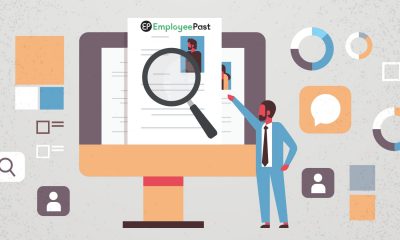More often than not, most major brands out there are more concerned with how to increase consumer engagement than how to increase employee engagement. They are constantly looking for new and exciting ways to catch the attention of customers and make connections that will lead to brand loyalty. Because we are living in the age of technology, we expect brands to engage with us in relevant ways that are bespoke to us or tailored to our lives. What companies must now realise, however, is that this principle extends to its employees as well.
Employees Are Consumers, Too
Every brand is an organization staffed by the same people who respond so willingly to tailored engagement strategies, so why aren’t more employers taking advantage of these strategies to foster a happier, more productive work environment? Why is it that, even though we are in 2016, many employers are using the same, more traditional methods of relating to their employees? Often using archaic tools like internal emails, intranet communications, boring training meetings and standardized annual reviews is akin in the marketing world to using flashing, pop-up banner ads and untargeted mail to get customers interested in your brand.
In this new world of hyper connectivity and constant communication, it is the employer’s job to make the work environment a great and engaging place if you want to attract and keep the best talent. Millennial in particular are looking for this plugged-in workplace that makes them feel valued, and, in the same way brand loyalty is dying in the marketing world, employees will have no qualms about leaving one company for another offering a work environment that is more validating and exciting. Employees should be rewarded for their feedback and company engagement just like consumers.
Happy, productive staffs are those that feel like they matter. Much like consumers, they expect to be rewarded for loyalty and engagement, and why shouldn’t they? After all, workers are just as vital to a brand’s success as its consumer base.
Get your staff ‘gaming’
The concept of using elements of game play to increase employee engagement can be deployed just as successfully behind the scenes as a human resources tool. Gaming tactics like point scoring, friendly competition, completing missions, unlocking achievements and winning prizes are all proven methods of facilitating collaboration and rewarding positive interaction. To make the implementation even simpler, this concept has now been modified for phones and tablets as well. With well over two billion smart phones active globally, utilizing a Smartphone platform for employee engagement is a simple, low-risk tactic.
Many companies still use the traditional “PowerPoint and human resources manager speech” method of training, but this is a very limited approach to transmitting information or teaching new skills. Instead, when companies choose to incentivize learning with interactive mobile quizzes, reward points and achievement statuses they see a significant uptick in employee satisfaction and company involvement.
Scoring high with your employees
As an example, when data storage company EMC2 tried to establish an online community for its employees, they struggled with getting users to fill out profiles, participate in forums and fill out surveys. It’s a fact that roughly 70 percent of online workplace communities fail through lack of participation, and EMC2 was swiftly heading in that direction.
Instead of allowing their community to slip into oblivion, they decided to implement a rewards and recognition program that employed game mechanics like unlockable achievements, missions to complete and status posts to share amongst others in the network. This simple shift produced a 10 percent increase in documents created and page visits, a 15 percent boost to discussion forum involvement and a massive 41 percent leap in training videos watched. Once employees were being tangibly rewarded for their time and effort, they were far more willing to be engaged in the workplace.
Another success story for gamification is the Deloitte Leadership Academy. This is a digital executive training program that delivers online courses and training modules to thousands of executives around the world. Their challenge was getting employees to consistently log in and complete corporate training courses around their packed work schedules.
Once the company established a game-like structure for their employee portal, it was no longer a challenge to get employees motivated to complete their training. The brand saw a 46.6 percent spike in the daily return average and a 36.3 percent increase to the weekly return average. Training course completion times were cut in half as well, and knowledge retention was increased.
The constantly-shifting landscape of the human resources industry requires forward-looking companies to try these newer, updated methods of gauging the pulse of the workplace. Successful brands are using strategies such as gamification, channels like mobile, and understanding the additional benefits of these new strategies. Remember, your team is your brand. Without them, there can be no consumer experience.


 Performance3 years ago
Performance3 years ago
 Performance3 years ago
Performance3 years ago
 Employee Life Cycle3 years ago
Employee Life Cycle3 years ago
 Recruitment3 years ago
Recruitment3 years ago
 Performance3 years ago
Performance3 years ago
 Performance3 years ago
Performance3 years ago
 Recruitment3 years ago
Recruitment3 years ago
 Recruitment3 years ago
Recruitment3 years ago




